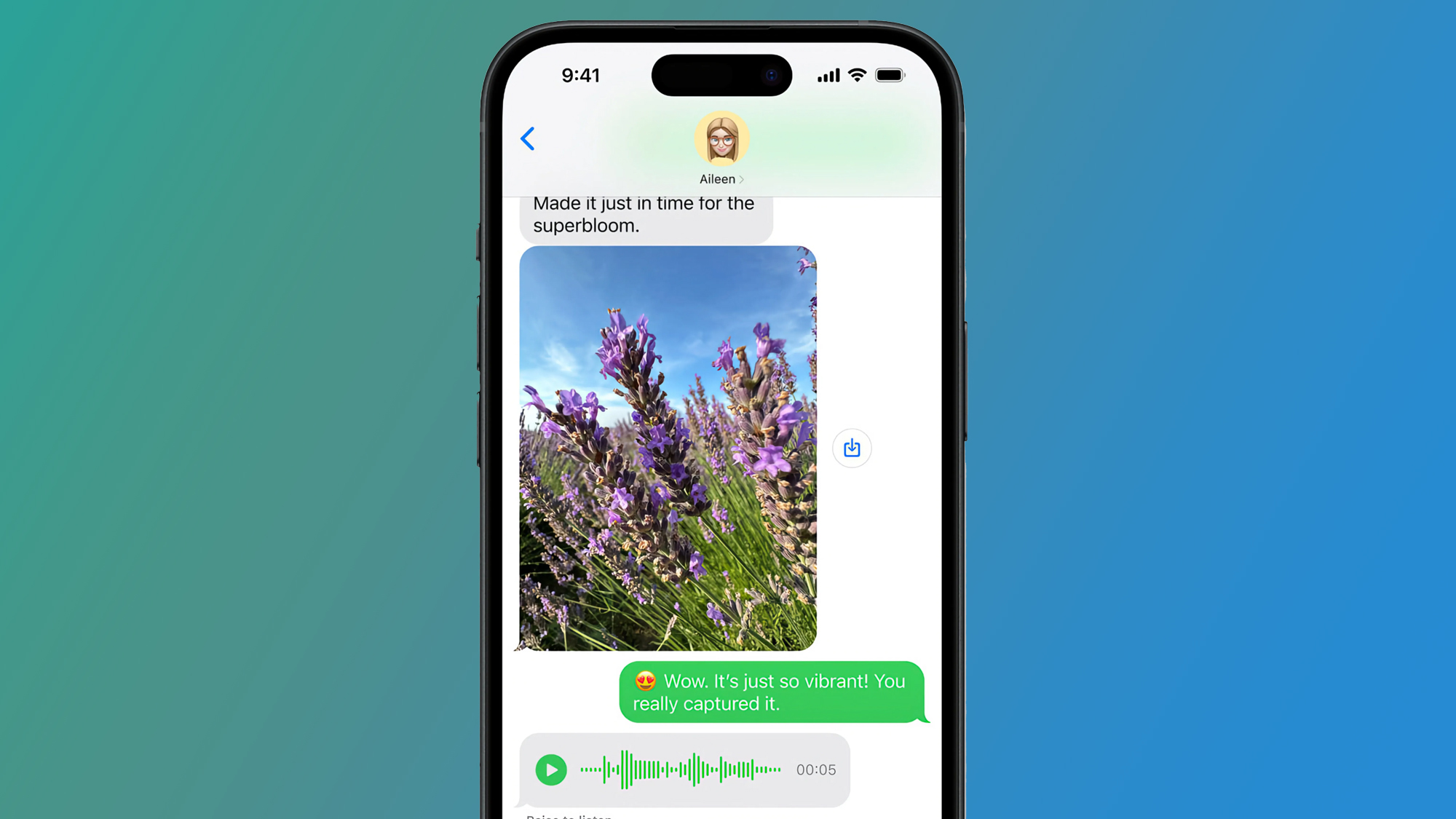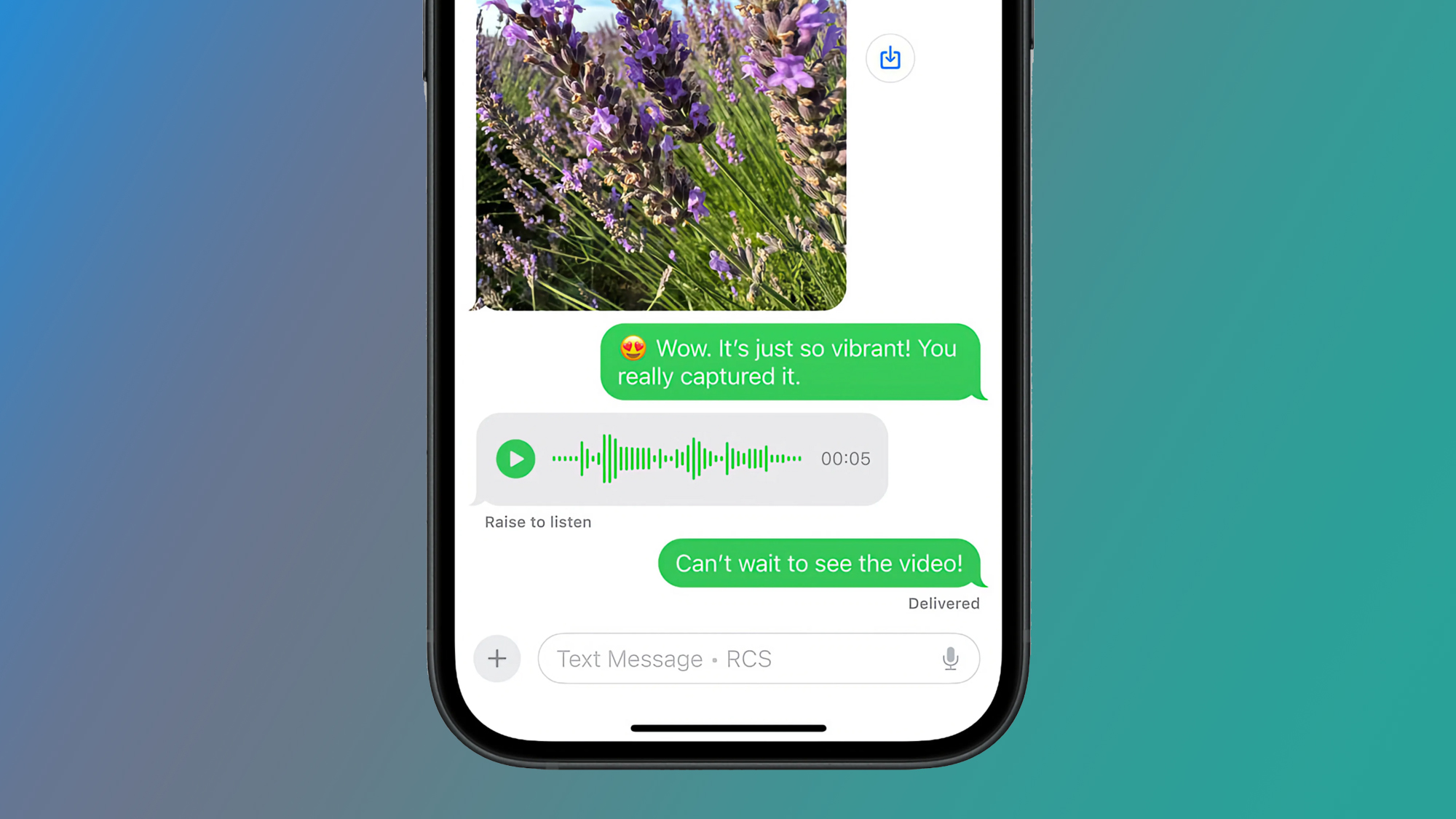6 ways iOS 18 improves messaging between iPhone and Android – and 3 ways it doesn’t
It just got easier for iPhone and Android users to share texts, photos, and videos

The divide between Apple’s iMessage and the Google Messages app has been the source of much debate ever since iMessage launched in 2011.
iOS 18 – which launched on September 16 and will ship with the iPhone 16, iPhone 16 Plus, iPhone 16 Pro, and iPhone 16 Pro Max – brings the universal Rich Communication Services (RCS) protocol to the iPhone for the first time.
This means that chats between iPhone and Android users will finally have high-quality media sharing, tapback reactions, audio messages, and other experience-improving features, where previously, these features were restricted to chats conducted within Apple’s ecosystem, or within the Android ecosystem.
RCS has been the standard for Android phones for a while now, and Google is celebrating Apple’s acceptance of RCS as a step in the right direction, treating the rollout as a victory of its #GetTheMessage campaign.
We’ve put together this guide to bring you up to speed on all the ways RCS improves messaging between iPhone and Android – and we've also highlighted a few things we still want to see added.
How to enable RCS

First of all, it’s a good idea to check that RCS is enabled on your iPhone or Android phone.
On iPhone, head to Settings > Apps > Messages > RCS Messaging, and slide the toggle to On.
Sign up for breaking news, reviews, opinion, top tech deals, and more.
Most modern Android phones have RCS enabled by default, but to be sure, head to the Google Messages app, tap on your profile picture, scroll down to the Messages Settings section, and tap the RCS chats tab to find a similar toggle.
Benefits
1. Group chats

Creating a group chat between iPhone and Android users without using a third-party app like WhatsApp was previously possible – with some major caveats.
A group chat between iPhone users offers everyone involved the full set of iMessage features, like audio messages, tapback reactions, and Memoji stickers. Adding an Android user to the mix, however, would previously cause all of these features to disappear, as the entire chat is switched over to MMS.
RCS doesn’t replicate all of the functions of iMessage, but it does at least allow for the sending of high-quality media, audio messages, and a smaller range of tapback reactions.
This has the dual effect of allowing everyone in a group chat to use these modern features, and putting less pressure on Android users who want to join iPhone-only conversations.
2. High-quality media
Messaging between iPhone and Android phones has, until now, been limited to the SMS/MMS standard, which only allows users to send and receive text, images, and videos up to a maximum of 5MB, or 30 seconds for video.
Due to this small file size limit, media sent over MMS often has to be heavily compressed, meaning the recipient may receive pixelated images and video (for reference, one minute of uncompressed 1080p MP4 video takes up about 20MB).
The RCS standard coming to iPhone supports a maximum file size of 105MB per message, meaning images and video can be sent and received in high quality. That said, you may still need to use a dedicated file transfer or storage service for larger files.
3. Read receipts

What’s the one thing worse than being left on read? Not knowing whether you’ve been left on read.
Read receipts – the notes or symbols that tell you when your recipient has seen your message – are a source of certainty that most users take for granted.
SMS and MMS messages lack the time-stamped read receipts found on nearly every other messaging service. iOS 18 and RCS finally bring this now basic feature to cross-platform messaging.
4. Typing indicators

It can be hard to get a sense of the flow of a conversation when you’re looking at a screenful of text, which is why typing indicators are so valuable.
Often represented as a message bubble containing animated ellipses, these notifications pop up on screen when someone is typing.
RCS support enables typing indicators for cross-platform messaging, so you’ll be able to see when your friends are getting their responses ready no matter the platform.
5. Location sharing

iMessage, and third party apps like WhatsApp, allow users to share a location within an interactive map, which has become a key feature for safety and convenience.
Apple’s implementation of RCS allows users to share a location pin within text conversations.
This doesn’t match the live tracking functionality of iMessage or third party apps like WhatsApp, but again, it’s a step in the right direction.
6. Send messages over Wi-Fi

RCS brings more options to stay connected by allowing users to chat over mobile data and Wi-Fi. For comparison, MMS messages can only be sent over a cellular network.
This has long been a selling point of third-party messaging apps like WhatsApp, Snapchat, and Signal, but these apps lack the ability to access cellular networks. For comparison, iMessage already supported Wi-Fi, mobile data, and cellular network compatibility.
Overall, that's a solid handful of new features, but there is more Apple could do to make RCS messaging on iPhone even better.
Downsides
1. No encryption – seriously

The RCS protocol supports end-to-end encryption, meaning your message is scrambled into code before being sent to the recipient, whose device has the unique key needed to decipher your message. In theory, unencrypted messages can be intercepted by third parties as they are transmitted from sender to receiver.
As The Verge notes, Apple has opted to use the basic version of RCS – the Universal Profile – to add end-to-end encryption to its implementation of RCS, meaning iMessage is still the only way to send encrypted messages through Apple’s first party service.
We aren’t a fan of this move by Apple. Companies need to differentiate their products, but doing so by offering suboptimal security is genuinely anti-consumer.
2. No video calling

While RCS supports video calling, it’s easy to see why Apple hasn’t included this in its basic messaging service.
FaceTime was so impactful that this branded name is still used as a generic term for video calling 14 years after it was first introduced.
Apple likely wants to keep its first-party video calling options centralized. Android users can join FaceTime calls from a web browser via a link sent from an Apple user, but they can’t initiate a call themselves.
3. Green bubbles are here to stay

The famous – or infamous, depending on who you ask – green text bubbles associated with Android phones are here to stay.
Practically, these green bubbles simply signal that a message originates from outside Apple’s iMessage protocol, but the otherness this implies has inspired enough stigma to fuel an anti-trust case, countless memes, and an entire song by global rap star Drake.
This effect is probably amplified by Apple’s large market share in the US, which hovers around 55%. A report by Bloomberg Intelligence found that 79% of Generation Z prefer iPhone to Android – this is a demographic which includes teenagers who are growing up increasingly reliant on technology for their social lives.
So, as pointless as the stigma around green texts is, it is real, and we hope that RCS implementation helps to allay this bizarre phenomenon.
The iPhone 16 lineup is the first to ship with iOS 18, but RCS will be available on all iPhones that support the update, the oldest of which are the iPhone XR, iPhone XS, and iPhone XS Max.
For tips and updates about all the new features coming to iPhone, be sure to check out our dedicated iOS 18 coverage.
You might also like

Jamie is a Mobile Computing Staff Writer for TechRadar, responsible for covering phones and tablets. A lifelong tech-obsessive, Jamie began his writing career as a music blogger before studying journalism at Goldsmiths College, and joined TechRadar in 2024. He thinks the iPhone 5S is the greatest phone of all time, but is currently an Android user.
As well as reporting on the latest in mobile hardware, software, and industry developments, Jamie specialises in features and long-form pieces that dive into the latest phone and tablet trends. He can also be found writing for the site's Audio and Streaming sections from time to time, or behind the decks as a DJ at local venues around London.